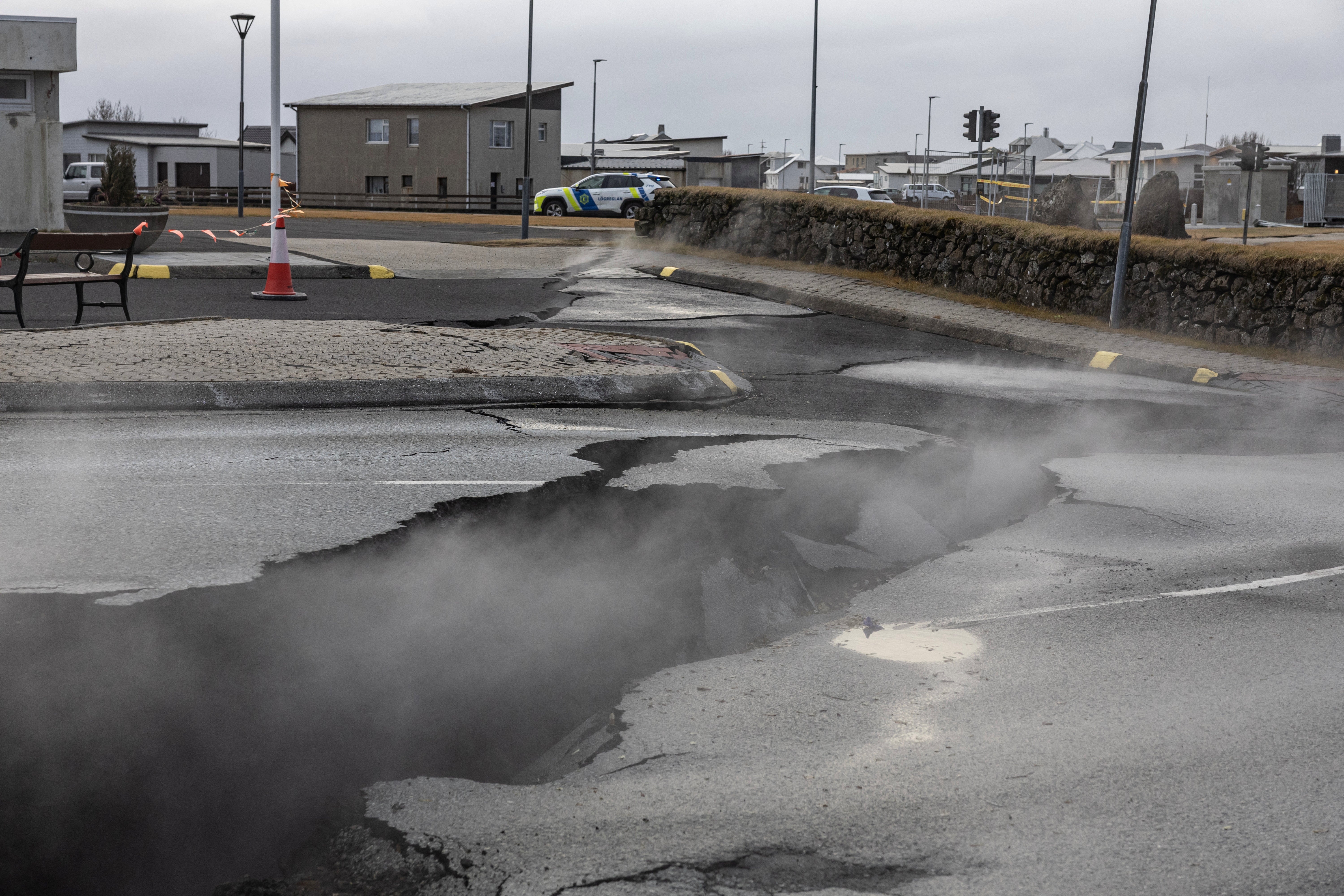Inside the abandoned Iceland town left in limbo by a volcano
The residents had just minutes to leave the little harbour town on Iceland’s west coast, as fissures rent the streets and houses collapsed. The question now is will they ever see their homes again
Your support helps us to tell the story
From reproductive rights to climate change to Big Tech, The Independent is on the ground when the story is developing. Whether it's investigating the financials of Elon Musk's pro-Trump PAC or producing our latest documentary, 'The A Word', which shines a light on the American women fighting for reproductive rights, we know how important it is to parse out the facts from the messaging.
At such a critical moment in US history, we need reporters on the ground. Your donation allows us to keep sending journalists to speak to both sides of the story.
The Independent is trusted by Americans across the entire political spectrum. And unlike many other quality news outlets, we choose not to lock Americans out of our reporting and analysis with paywalls. We believe quality journalism should be available to everyone, paid for by those who can afford it.
Your support makes all the difference.A sense of trepidation builds on the coach as we are waved through the roadblock that has held back people from returning to the Icelandic town of Grindavik amid an “imminent” volcanic eruption warning.
But the volunteer rescue forces posted on guard duty in battering 32mph winds have to follow the strict instructions of Iceland’s tourist minister. There is a lot of high-speed arguing in Icelandic, and eventually we pass through.
The coach is carrying the world’s media for the first time since the initial 5.2-magnitude earthquake gripped the globe’s attention. But after days of stalemate, fears of Iceland’s economy tanking, and rumours spreading of the entire country disappearing beneath the Atlantic, the government has reluctantly allowed the press to visit the site.
The drive takes in the vast expanse of Iceland’s volcanic beauty, complete with ethereal elves' houses built into the rocks, which have in the past forced state planners to reroute roads.
One local tells me the first person who tried to move an elves’ dwelling had their own house catch fire. The second time their wife died.
“But what happened the third time?” I ask... to no answer. Maybe the earthquake of Grindavik is punishment enough in this magic-fearing country.
“Mind your step,” I am warned in the understatement of the century, as a brick that used to form part of the junction of the Austurvegur and Ranargata roads gives away under my foot and tumbles into a vast black chasm.
The crack begins on grass, just a sliver, where it is easy to skip over from one tectonic plate to the other.
It just misses the Lutheran church and then begins to open up with steam still billowing out of it from the bubbling magma chamber causing the chaos from a kilometre below.
You can follow the chasm along to where it has ripped up a children’s playground before it stops by a pagan temple complete with Stonehenge-like sculptures. Maybe Viking blessings do work.

The once bustling harbour town has been left empty since 10 November – the day the ground opened up and caused all the children and the elderly to flee, not knowing what was around the corner or if they would even see home again.
Early Christmas decorations are left still switched on and children’s bikes have been left to rust in the front yard of a home with an enormous crack down the side – simply because it stood in the way of the shuddering faultline stretching from the mountains through the little town and into the Atlantic.

One street has its houses now kneeling forwards and a huge fissure splits Grindavik’s only old people’s home.
The town’s fish and chip shop still has its garish advertising hoarding switched on offering an eerie respite from the horrific hailstorms that descend every three minutes upon this desperate Englishman.
Evacuating 3,700 residents was no mean feat. They were told to turn off the electricity in their homes and close all windows.

You can see the signs flapping in the high winds, declaring the home was successfully emptied.
Rescue workers, still hesitant to return on the trip, recall the moment they told people to get out of their homes, some of which they were born in, and leave everything behind.
Hjordis Gudmundsdottir, from Iceland’s civil protection department, told The Independent: “We had to quickly explain to them what was happening then we had to tell them to move, where to go. We just wanted to help them.
“It is still dangerous here. This is why we don’t let normal people or the media in until now. I have never seen anything like it before. Usually we will have a few minutes warning to get out but with the weather like it is today we have even less.
“It was such a difficult day, especially for the people who live here. We always think of them and hope they can come home soon. But we don’t know when.”
On the way out we see the valiant non-stop efforts of diggers carving out lava trenches to protect the Svartrsengi geothermal power plant.
If there is a volcanic eruption, which is thankfully seeming less likely by the day, I doubt anyone will return to Grindavik. But what is without question is that the quaint, family-friendly harbour town will never be the same again.

Join our commenting forum
Join thought-provoking conversations, follow other Independent readers and see their replies
Comments